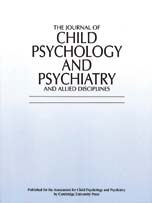No CrossRef data available.
Learning to Read in Williams Syndrome: Looking Beneath the Surface of Atypical Reading Development
Published online by Cambridge University Press: 01 October 2001
Abstract
In this paper, we make a fundamental distinction between literacy attainment scores and the actual process of learning to read, and examine these two aspects of reading in atypical development. Reading skills in a group of children and adults with the genetic disorder Williams syndrome (WS) were compared to a group of typically developing children matched for reading age and receptive vocabulary scores. Study 1 focused on the product of reading and explored the relationship between reading, general cognition, and phonological skills. Phonological skills were shown to be related to individual differences in reading attainment in both groups, although more weakly in the WS group. Experiment 2 examined the process of learning to read. The two groups were taught to associate abbreviated spellings (cues) with spoken words. The cues differed in their phonetic closeness to the target words, whereas the target words differed on the semantic variable of imageability. Compared to controls, the WS group showed slower learning, less sensitivity to the phonetic quality of the cue, and reduced influence from the imageability of words. The results support the hypothesis that although reading levels in WS depend on phonological skills, the full development of their reading is compromised by weak semantics. The studies highlight the importance in atypical populations of examining both reading levels and the actual process of learning to read.
Information
- Type
- Paper
- Information
- The Journal of Child Psychology and Psychiatry and Allied Disciplines , Volume 42 , Issue 6 , September 2001 , pp. 729 - 739
- Copyright
- © 2001 Association for Child Psychology and Psychiatry

